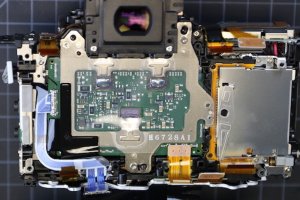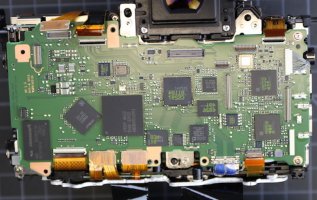I don't understand why people think monopolies are a good thing.
Sony doesn't have a monopoly on sensor design there are quite a few others who make them (including Canon).
Upvote
0
I don't understand why people think monopolies are a good thing.
That makes no sense. Sensors and regular chips are very different. It could be because point and shoot business is almost dead, though most of those sensors weren’t built by Canon. Also, no matter what, the camera business, for everyone, is tottering. Even Sony is making fewer sensors.
Bad idea. Despite that Canon slow walked the onboard amplifier, which is why their chips have been behind, that era is over. Canon has an excellent semiconductor manufacturing structure. They’ve been doing it for decades. Having them go to Sony for everything eliminates any chance they could advance further. They make a whopping number of video sensors, including some of the worlds most advanced.
I’d like to see them apply some of the technology they’ve been showing at the Canon shows here in NYC every two years, or so.
Just don’t forget that Canon is much larger and more diversified than Nikon is, and that Sony makes almost all of its profits from the Playstation, games, accessories and network, not from their hardware sales.
Bad idea. Despite that Canon slow walked the onboard amplifier, which is why their chips have been behind, that era is over..
I assume you are claiming Canon has moved the VGA on-chip? I had suspect this looking at some of the tear-downs recently. It looks like the ADC(s) is still off-off chip but they have moved them to the main PCB (they used to be parked right on the back of the sensor PCB).
That's very unlikely that they would move them so much farther away as that opens you up to much more electronic noise. The lack of ADCs on the back of the chip, along with Canon explicitly saying they were moving the ADCs on chip in an IR interview and the sudden increase in dynamic range strongly point toward the ADCs being on chip in current Canon bodies.
OK, can you provide a link to a statement (actually from Canon) that they put the ADC's on chip. I thought that as well and made that argument. however, if you look at the teardown of the 5DIV and some of the shots of the 80D MB there is what appears to be a multi-channel ADC chip between the DiGiC part and the sensor. I know that they DID improve the DR starting with that generation but they could have done that by reducing the effective noise figure ahead of the ADC as well. Looking at Bill Claff's results, the DR curves look like the 5DIII generation just moved up a stop.
This all said, I looked at the M5 which is supposed to resemble the 80D and the recent teardown of the EOS R which is supposed to be similar to the 5DIV and I don't think I see a similar ADC chip. If the amps are on board, they can tolerate more noise since the signal levels coming down from the sensor would be louder.
IR Interview with Masaya Maeda said:DE: This is actually a very technical question. I’m not sure if it’s one that you would be free to answer or not, but with sensor technology some have pointed to the analog-to-digital conversion implementations being very critical for image quality and dynamic range. Can you tell us whether Canon currently uses on-chip or off-chip A/D converters?
MM: Right now, we use both on-chip and off-chip, but recently I made the decision going forward to concentrate on the on-chip.
DE: Mm-hmm. Yes.
MM: The intent is to increase the performance. In terms of cost, this may be a little negative, but in terms of the direction to take, this will make us more competitive.
DE: So the net cost, the combined cost of the sensor and separate A/D is less than a sensor with A/D on it. Ah, I didn’t realize that!
Yes, I remember seeing that one. I wonder if that was after the 80D and 5DIV. Both iof those appear to have external ADC's. Not sure about the "R" and M5.
What do they use for audio from the mic input? An integrated solution? If not, there would still be an ADC even if the image sensor has its on die.Yes, I remember seeing that one. I wonder if that was after the 80D and 5DIV. Both iof those appear to have external ADC's. Not sure about the "R" and M5.
In this case the thing is connected to the sensor board. Here is the sensor PCB. Note the blue ribbon cable that comes off the sensor board (middle left) and folds down to the bottom left.What do they use for audio from the mic input? An integrated solution? If not, there would still be an ADC even if the image sensor has its on die.


Thanks. The second image is too blurry for me to read the PN, but I’ll take your word it’s an ADC.In this case the thing is connected to the sensor board. Here is the sensor PCB. Note the blue ribbon cable that comes off the sensor board (middle left) and folds down to the bottom left.
View attachment 181553
This cable connects to the main board as shown below:
View attachment 181554
The signals on this cable feed over to the Analog Devices part above and to the left of the ribbon connector attachment connector.
These signals don't appear to be going to the AV connectors on the edge of the camera (although, I also at first thought that).
Thanks. The second image is too blurry for me to read the PN, but I’ll take your word it’s an ADC.
Boy is that blue flex cable an ugly run...
Yes, I remember seeing that one. I wonder if that was after the 80D and 5DIV. Both iof those appear to have external ADC's. Not sure about the "R" and M5.
Canon is on record as talking proudly as being an "end to end" imaging company, who make everything from their sensors through to printers. They've just had an event in Europe showcasing their sensors, that they're trying to sell to other companies as the best. Further, they're aggressively going after Sony in the mirrorless space.
A lot of nonsense on this thread. It is very unlikely that Canon will use Sony sensors on their ILC’s. ...
